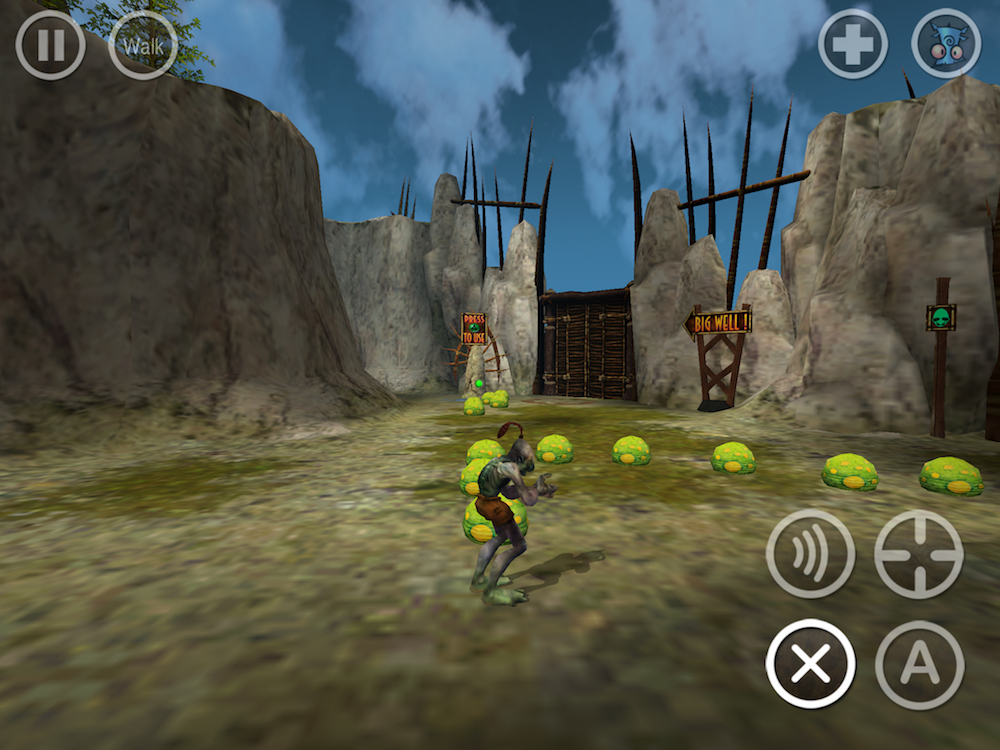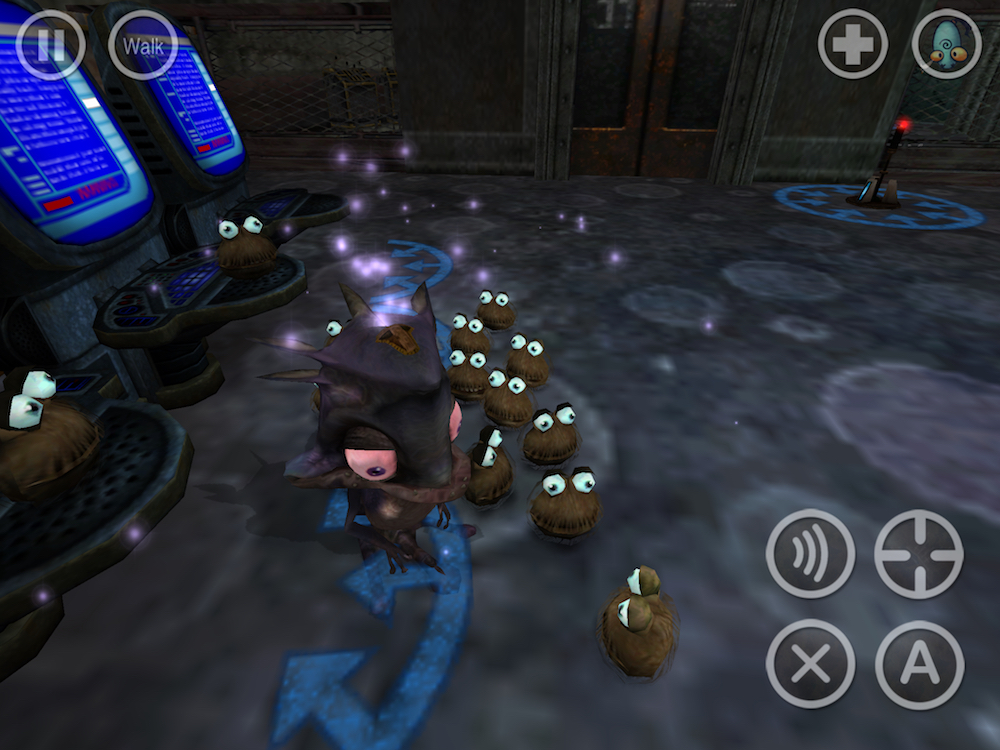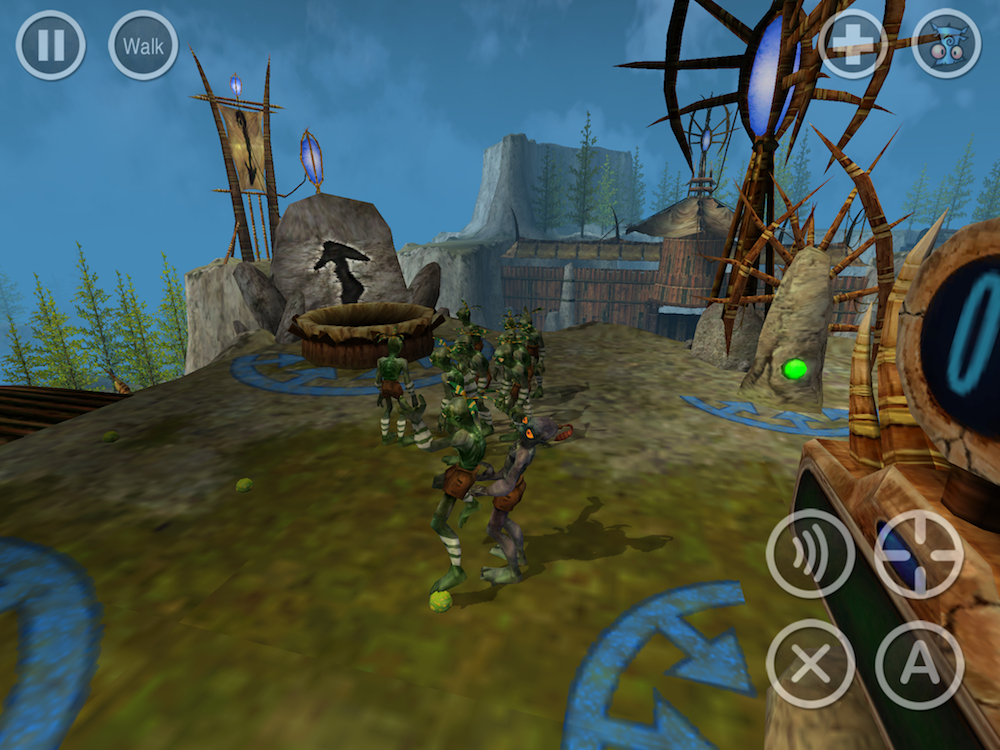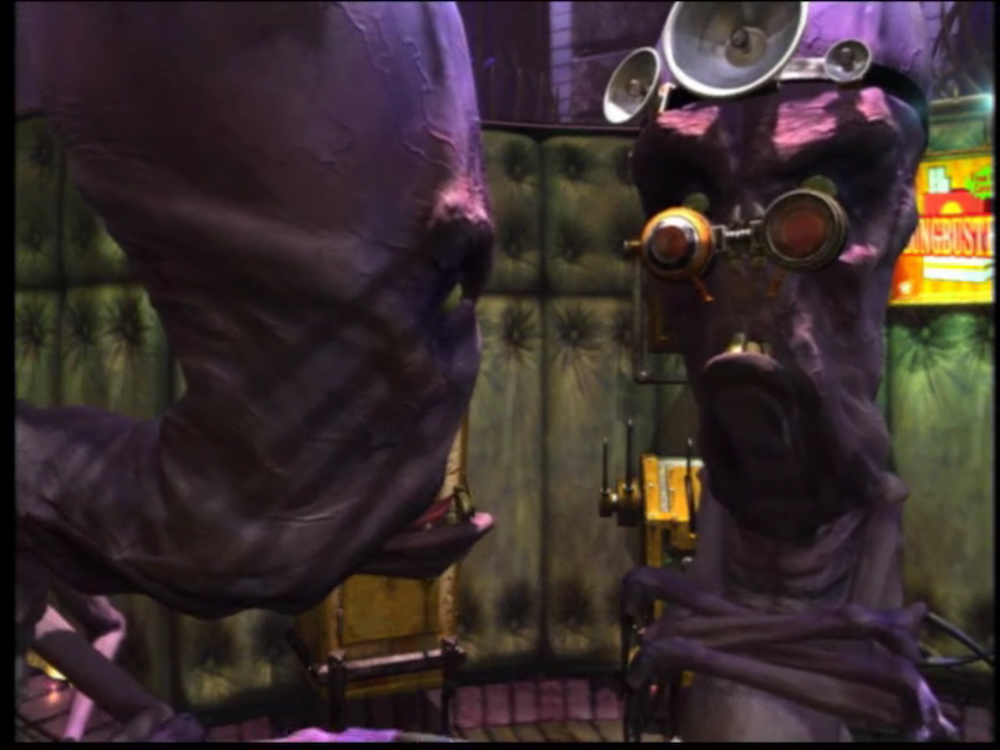 Late last year, iOS gamers were treated to an excellent port of the cult classic Xbox title Oddworld: Stranger’s Wrath ($2.99). In my review of that game, I sounded off on the series on the whole, making no bones about my admiration for the tight design and excellent gameplay found in Stranger’s Wrath, referring to it as without question the developer’s best game. I also made no secret of my feelings about the previous games in the series, which I’ve always felt were lovingly-crafted but ultimately quite middling outside of their production values and strong art direction. I think there are valid reasons why they were like that, but the point remains that I don’t think very highly of the gameplay they offer. I guess that’s kind of a foreboding way to start this review, but stay with me.
Late last year, iOS gamers were treated to an excellent port of the cult classic Xbox title Oddworld: Stranger’s Wrath ($2.99). In my review of that game, I sounded off on the series on the whole, making no bones about my admiration for the tight design and excellent gameplay found in Stranger’s Wrath, referring to it as without question the developer’s best game. I also made no secret of my feelings about the previous games in the series, which I’ve always felt were lovingly-crafted but ultimately quite middling outside of their production values and strong art direction. I think there are valid reasons why they were like that, but the point remains that I don’t think very highly of the gameplay they offer. I guess that’s kind of a foreboding way to start this review, but stay with me.

Abe’s Oddysee, the developer’s first game, was an unexpectedly big hit for a rookie game developer. Its star, the lovable Abe, became a sort of cult icon in the PlayStation 1 era, an impressive feat for a 2D game in an era that unfairly looked down on that style of presentation. It was such a big success that the Oddworld Inhabitants found themselves working on a direct sequel that would serve as a sort of stop-gap spin-off while they put together the second installment of their planned quintology of games. That game would feature a new hero, as each of the games in the series was planned to. The charming amphibious fellow by the name of Munch made his debut in November of 2001 at the launch of the original Xbox with Oddworld: Munch’s Oddysee ($2.99).
Munch’s Oddysee is probably the weakest of Oddworld’s releases. This was the Oddworld Inhabitants’ first crack at a true 3D game, and I suppose with that taken into consideration, it’s surprisingly decent. The production values are, as you would expect, excellent, and the game oozes personality. This feels like an Oddworld game, from top to bottom. But the gameplay itself is a little bland, the sort of solid yet unimaginative fare we saw pretty frequently during the generation of consoles it was born in. It tries to distinguish itself in several ways, at least. There are two very different playable characters you can switch between, and the communication aspect of the Abe games is well-represented here. In the end, though, you’re still spending most of your wandering around fairly uninteresting level layouts, doing a bit of awkward platforming, solving environmental puzzles by combining your characters’ abilities, and collecting X doodads to open the path to the next level.

On Xbox, Munch was easily lost in a sea of 3D platformers in a similar ballpark of quality. On iOS, it has a much more open field in front of it. There aren’t a lot of 3D platformers on mobile in general, let alone relatively high-budget efforts like Munch. Its heavy puzzle-based approach wasn’t remarkable on consoles in the early aughts, but there isn’t a whole lot like it on the App Store as far as 3D games go. While the game has its faults, and I’m going to detail them as best as I can, it’s important to remember that Munch was at least in the league of being a headliner for a major platform holder. Relative to most other 3D platformers on iOS, this is a huge, lavishly-produced game that will keep you busy for at least ten hours. For the price the Oddworld Inhabitants are charging, it’s quite a good value.
Unfortunately, that length is one of the problems with the game, I think. You start off playing as Abe and Munch separately, presenting slightly different challenges and obstacles. Abe can run and jump around quite well, and is able to call on his mudokon friends for help. He can also pick up and throw things, including the mudokons themselves, and take possession of certain other creatures. Munch, being primarily a sea-based creature, has a lot of trouble getting around on land, but he’s great in the water. He has his own little friends to call on for support, though they’re not quite as versatile as Abe’s buddies. He’s also able to directly attack enemies by giving them a shock from the top of his head, provided he’s had the right drink.

Oh, right, the drinks. One of the stranger things about this game at the time was the co-branding deal it had with SoBe, the beverage company now owned by Pepsi. Abe and Munch could chug down drinks from SoBe vending machines to gain access to temporary boosts and powers. The brand has been removed from this version of the game, but the odd fixation on sugar water of course remains. I’ve always felt that was a bizarre bit of corporate fetishism in a series that seems to find corporations repulsive, but as a mechanic, I suppose it works as well as any.
Anyway, after a few levels of coming to grips with each character, they’ll meet up and you’ll have your pick of the two of them throughout most of the rest of the game. From here on out, things start to get a little repetitive. Most levels proceed in a very similar fashion, with you taking one of the two characters as far as they can go to flip some switch or open a route for the other character. This usually involves gathering up a bunch of allies or fruits or what-have-you. You then take over the other character, gather allies or fruits or what-have-you to take them as far as they can go to open a route for their partner, and so on. To the game’s credit, there are a lot of mini-games and unique puzzles along the way, but it feels like the boring tasks get repeated too often and the enjoyable ones only appear once or twice.

Other problems that were generally endemic to the genre in that period of time are also found in Munch’s Oddysee. The camera is a pain in the hindquarters at times, the platforming physics are imprecise and often frustrating as a result, and the level designs feel artificial in a way the settings of the other Oddworld games don’t. Visually, Munch lacks the imagination of the Abe games and the cohesiveness of Stranger. Playing in longer sessions will almost certainly hammer home just how thinly spread the game’s ideas and assets are over the course of its lengthy runtime. In shorter sessions, it’s a lot more tolerable, but lugging several objects from point A to point B one at a time is grating no matter how much time you put in. Fortunately, the game allows you to save at any time, so you can easily take it on in slices of your own choosing. It’s too bad the game doesn’t have an autosave of some kind, though. Save often, friends, because you’ll be repeating yourself enough as-is without adding to the pile.
Munch’s Oddysee offers multiple endings, contingent on how many of your friends you save versus how many die. To get the best ending, you can’t lose or fail to rescue even a single ally, so be careful. You can still get a satisfying ending if you make several mistakes, but if you make too many, things get awfully dark in a hurry. That’s Oddworld, though. It can have you saying “aww" at one minute and “eww" the next. And even though it lays it on a little thick in this installment, I do appreciate its overall message. Munch is a great little fellow, and I’m sad that we haven’t seen him return for another game yet. Abe’s as enjoyable as ever, and his buddies seem to always have a cheeky comment or two to make. You’ll want to see everyone get their happy ending, but you’ll really have to work for it.
The port itself is good. The game looks sharp given its age, and although you can’t customize the graphical settings to the extent that you could in Stranger, you can at least set the gamma levels to your liking. That’s a good thing, because this game is awfully dark. The controls are sensible and you can fully customize where you want each and every virtual button, or use an MFi controller if that’s your thing. You can save whenever you like, and the game even supports iCloud, but I really wish it supported suspend saves of some sort. It’s easy to forget to make a manual save, and that’s not even taking into account situations where you need to change tasks and might boot the game out of memory. It’s weird to see consideration for more unusual mobile features, but not for one of the more basic comforts like suspend saves.
The personality that permeates Oddworld games can forgive a lot of sins. Oddworld: Munch’s Oddysee has a lot of that personality to spare, and that’s a good thing, because this game has its fair share of design sins. This is the most uneven game the Oddworld Inhabitants have released so far, but they don’t have any truly bad games in their library, so that’s not the condemnation it may sound like. Munch is a good port of a fun but flawed game that unfortunately shows its age and era a little too much. If you have the patience to see yourself through the parts of the game that don’t work very well, however, you’ll get a good time out of the parts that do.